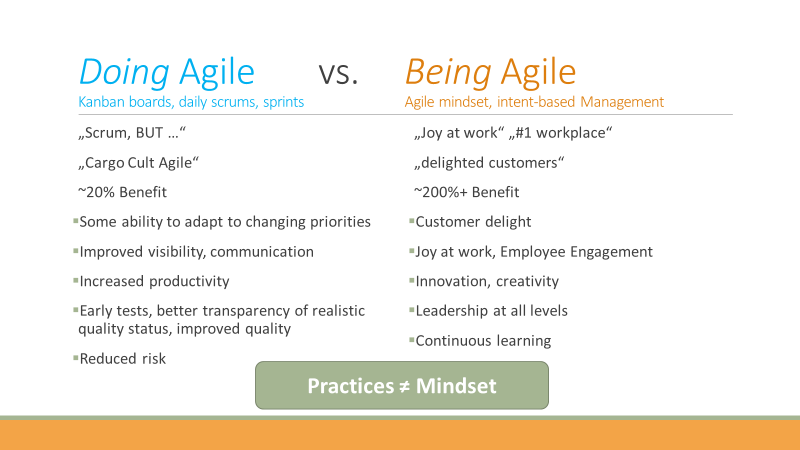The title of this post may seem a bit provocative. I hope that helps draw attention to a fairly serious issue.
Sometime unconsciously leaders on different levels of seniority within the organization exhibited behavior that harms or even derails efforts to improve e.g. product innovation and delivery or other key capabilities targeted by adopting an agile way of working.
Without awareness about the negative consequences it may be difficult to change the situation. So I started collecting some behavioral pattern shown by leaders that I have observed during my professional journey and that I saw having negative consequences for teams trying to improve agility:
- Push for agile just for the sake of the “optics of agile” – abusing the label “agile” instead of truly embracing it.
- Underestimate the significant impact on culture and leadership behavior – along the lines of an idiomatic expression that we have in my native language: “Wash my back, but don’t make me wet!”
- Pushing for too much too fast; setting unrealistic expectations.
- Delegating the responsibility for agile implementation far down in hierarchy.
- Missing to engage actively and personally in the agile journey.
- Miscommunication about the goals and changes driven by the agile transformation.
- Missing to fund agile training properly and missing to personally attend agile leadership training.
- Insisting on a detailed, long-term project plan with definitive milestones upfront for the agile transformation itself.
- Punishing people in public if anything goes wrong.
- Pushing for individual incentives that are strictly focused on delivery – for work within the system – leaving NO ROOM for working on improving the system of delivery.
What are your thoughts? Have you observed any of these behaviors as well? Have you seen other behaviors that harmed the agile transformation?
Please let us know!





